Today we are going to continue our Project TinyMiniMicro series, with what may be my favorite unit right now, the HP EliteDesk 805 G6. This is one of the more interesting units as it is perhaps the highest-end previous generation AMD Ryzen 4000 series system in the market. In this review, we are going to go over what this unit offers compared to the competition. We are even going to discuss the fun way we managed to get this unit, and the troubles getting the subsequent generation. With that, let us get to our review.
Project TinyMiniMicro Background
In Project TinyMiniMicro we are purchasing a large number of these devices from different sources. While a standard STH review is of a new product, these TMM nodes occasionally have specs that differ from what one would expect. In all of these pieces, we are going to talk about what makes the nodes unique. We are now well over 40 different nodes to increase diversity. We are testing these on a more circular economy/ extended lifecycle basis to see how they can be deployed after their initial use as corporate desktops. As always, we have a video version of this article.
We recommend opening this video in a YouTube tab/ app for a better viewing experience.
In terms of pricing, this is one I spent way too much on. The reason is that I simply wanted to test this unit, especially as we found that Lenovo was vendor locking the ThinkCentre M75q Tiny Gen2. This unit was purchased on eBay to test if HPE was using PSB. Our testing found it was not. The unit cam with, WiFi and a 256GB NVMe SSD and embedded Windows 10 Pro license which would have cost us around $140 alone.
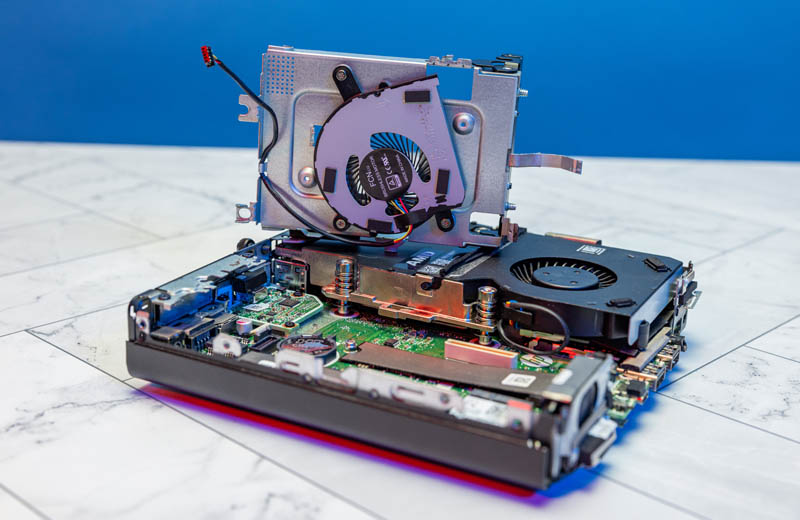
CPU wise, we got an AMD Ryzen 7 Pro 4750GE 8 core/ 16 thread processor. Instead of getting the 8GB SODIMM in this unit, that we would replace anyway, we got a 1GbE FlexIO module. This is the FlexIO NIC module we ended up finding would work in the HP ProDesk 405 G4 Mini. We just wanted to recognize a STH reader here, Jose, who sold this unit that came with the FlexIO module.
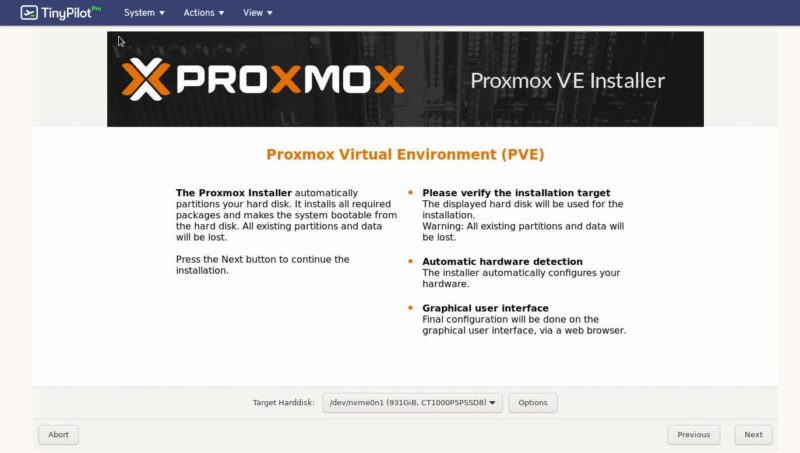
For those wondering, HP’s higher-end units with Ryzen CPUs are the “EliteDesk 805 Mini” units. The ProDesk 405 line is a lower-end unit. HP actually puts the EliteDesk 805 at parity with the 800 G6 Intel-based solutions in terms of market positioning. That is a big deal since Lenovo actually positions the M75q Tiny Gen2 (AMD) below the M90q Tiny Gen2 (Intel.) This unit has more features than the M75q.
We are going to go into a quick hardware overview, then into the key specs. We are then going to talk a bit about performance and power consumption before getting to our lessons learned from these units and our final words.
HP EliteDesk 805 G6 Hardware Overview
One of the great features of the EliteDesk 805 G6 Mini is the front I/O. Athough we only get a single headset combo jack, we also get three USB ports. There are two USB 3 Gen2 Type-A ports and one Type-C port. Having three 10Gbps USB ports on the front of the front of the system is a differentiator in this 1L PC market.
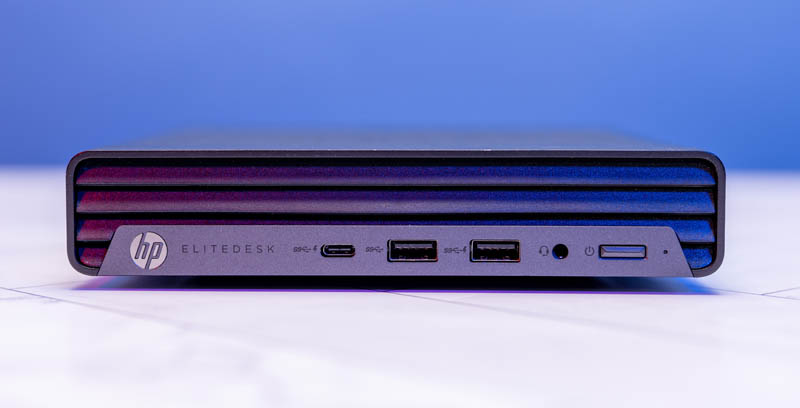
On the rear of the unit, we get two DisplayPort 1.4 ports. There are also four USB Type-A ports. The left and right ports are 10Gbps ports and the middle two are 5Gbps ports. We wish that HP clearly labeled these. Our standard rear I/O also includes a 1GbE Realtek NIC.
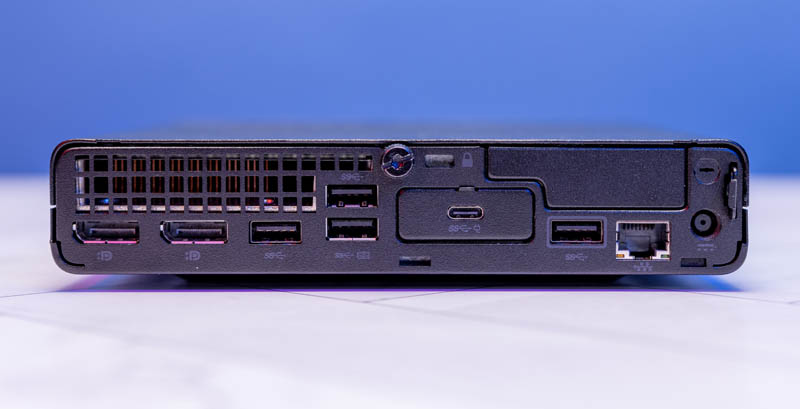
On the rear of the unit, you will see two expansion slots. This compares to a meager rear expansion on the Dell units and Lenovo has a larger expansion slot, but only one. The expansion slot that has the USB Type-C port is a FlexIO V2 slot. Allegedly one can also get a 2.5GbE NIC for this, but we have been successful one of three times getting the i225 2.5GbE FlexIO V2 NIC. HP also has a second expansion slot on the top of the unit that is used for the dGPU as well as some other options.
We will quickly also note that the top of the chassis is heavily perforated. This means that air is drawn from the top of the chassis and so stacking these units is not advisable.
Next, let us get into the system and see what is inside.

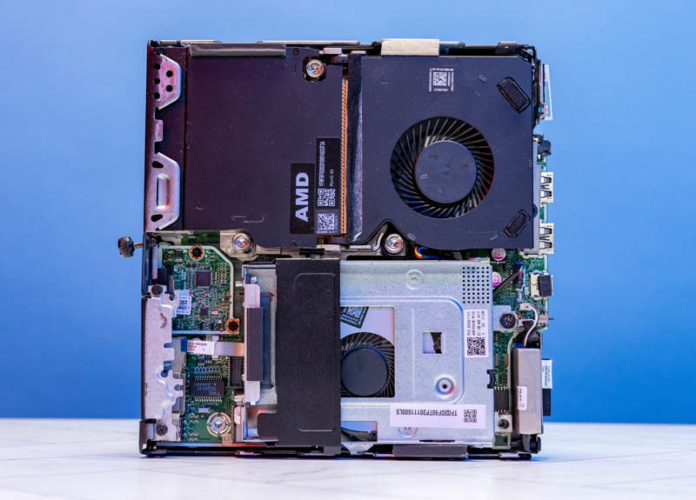



Umm, the clip is still shows as “unlisted”…
Does this unit support ECC memory?
You have omitted the actual value of max power consumption from this sentence:
The maximum we saw was around (??) which was quite surprising.
That PCIe white connector is that some OCuLink port for the PCIe connectivity and is that PCIe x4 or PCIe x8 connectivity(?)/whatever the PCIe provided for the Discrete GPU option there? And can that GPU later be swapped out by the End User?
It’s unfortunate HP chose to make only laptop-class 35W Ryzens available in this chassis, when the EliteDesk 800 G6 is available with proper desktop-class 95W CPUs like the i9-10900K in mine. It’s also unfortunate that 10G Ethernet is not available as an option on the EliteDesk Mini line, or even Thunderbolt to use an external NIC like the QNAP I have on my Z2 Mini G4.
They’ve got the NVIDIA 1660 TI version in the G8 shown for a second in the video for this. Also there are 65W TDP CPU options for these
i’d like to see what the DGPUs look like
I impatiently await the day where 10Gbps NICs are an option on 1L form factor computers.
When I can build a silent, power sipping Spark cluster in the same space as a stack of napkins, I’ll be quite thrilled.
One thing I’ll note is if you call HP with your configuration, you can ask for a bit of an extra discount (about 10%)! I got a similarly specced ProDesk 405 Mini G8 a year ago for only about $670 taxed and shipped as a result.
is the discrete GPU(Geforce1660ti) orderable separately?
Does this unit support ECC memory?